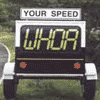I'm doing some logging for AutoVE on my 03 Silverado and I wanted to know if it matters if the MAF is unplugged or not? I have the Tune setup exactly as the tutorials says(I hope) with the exception of unplugging the MAF. After applying the BEN data to the tune my AFR is still all over the place and I just wanted to know if this is the culprit As always thanks for any help.After I applied AutoVE to tune.efiAutoVE.efi



 Reply With Quote
Reply With Quote




